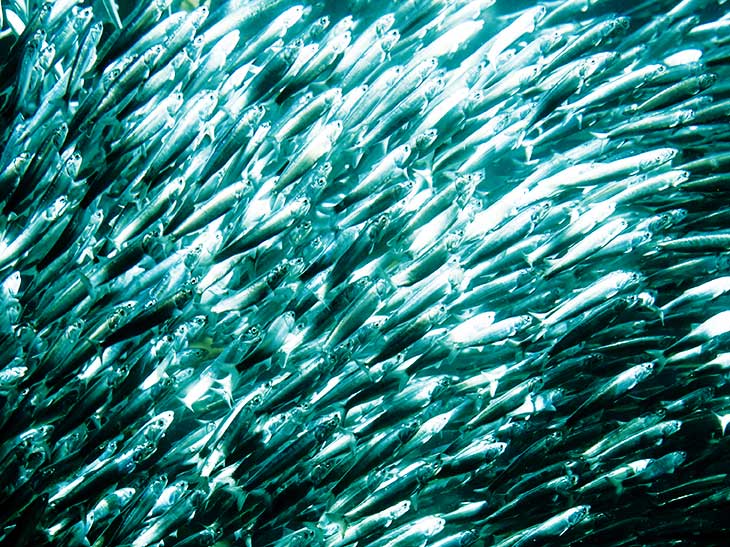By Coastal Angler Magazine Staff
Photo by William Warby
In August, the Mid-Atlantic Fishery Management Council approved an amendment to protect unmanaged forage species in federal waters of the Atlantic from North Carolina to New York.
This amendment would prohibit commercial fishing directed a number of species low on the food chain that are currently unmanaged. That prohibition would continue until the council has had time to better assess the situation with these species.
The list is made up of critters most of us would consider bait. From sand lances to squids—and anything measuring less than an inch as an adult—the amendment would take a proactive approach to ensuring the sustainability of the little fish that feed the bigger fish recreational anglers like to catch.
To many, such a broad federal prohibition concerning species for which there might—or might not—be a problem screams of the kind of unnecessary federal overreach that has hammered the recreational fishing industry in the Gulf of Mexico. But when considering the species in question, which includes herrings, anchovies, sardines and halfbeaks, groups supportive of recreational fishing, like the Coastal Conservation Association have come on board to support the measure. These are the forage species that play a vital role in the marine food chain. They eat the tiny stuff like plankton and then are eaten by larger fish. They are vital to the marine ecosystem not only in the Mid-Atlantic but throughout the Atlantic. Think of all the highly migratory predator species recreational anglers target.
The Coastal Conservation Association provided the following as a talking point in support of the amendment:
“Under current regulations, a fishery could open on any unmanaged forage species with no assessment of the impacts on the ecosystem or economy. These species are at risk from the growing demand for fish oil, feed for livestock and aquaculture, and bait, and there are currently no regulations to prevent industrial fishing. Boats that could easily start targeting these fish can pull in hundreds of thousands of pounds in one haul. A significant fishery could develop very quickly with completely unknown impacts to the species’ own population, the ecosystem, and the economy relying on sustainable fishing.”
During the public comment period, the council received more than 21,000 comments concerning the amendment. Most of those comments concerned which species should be included in the amendment.
Notably, false albacore, one of the more than 250 species being considered for inclusion, was removed from the final list of more than 50 forage species protected under the amendment. This recreationally important fish was deemed too high in the food chain to be included with the other forage species being protected. The council also agreed that, prior to allowing any new fisheries or expansion of existing fisheries, the council would consider whether the species in question should be managed as a stock in the fishery or if other discretionary management measures should be used.
[easy-social-share]
